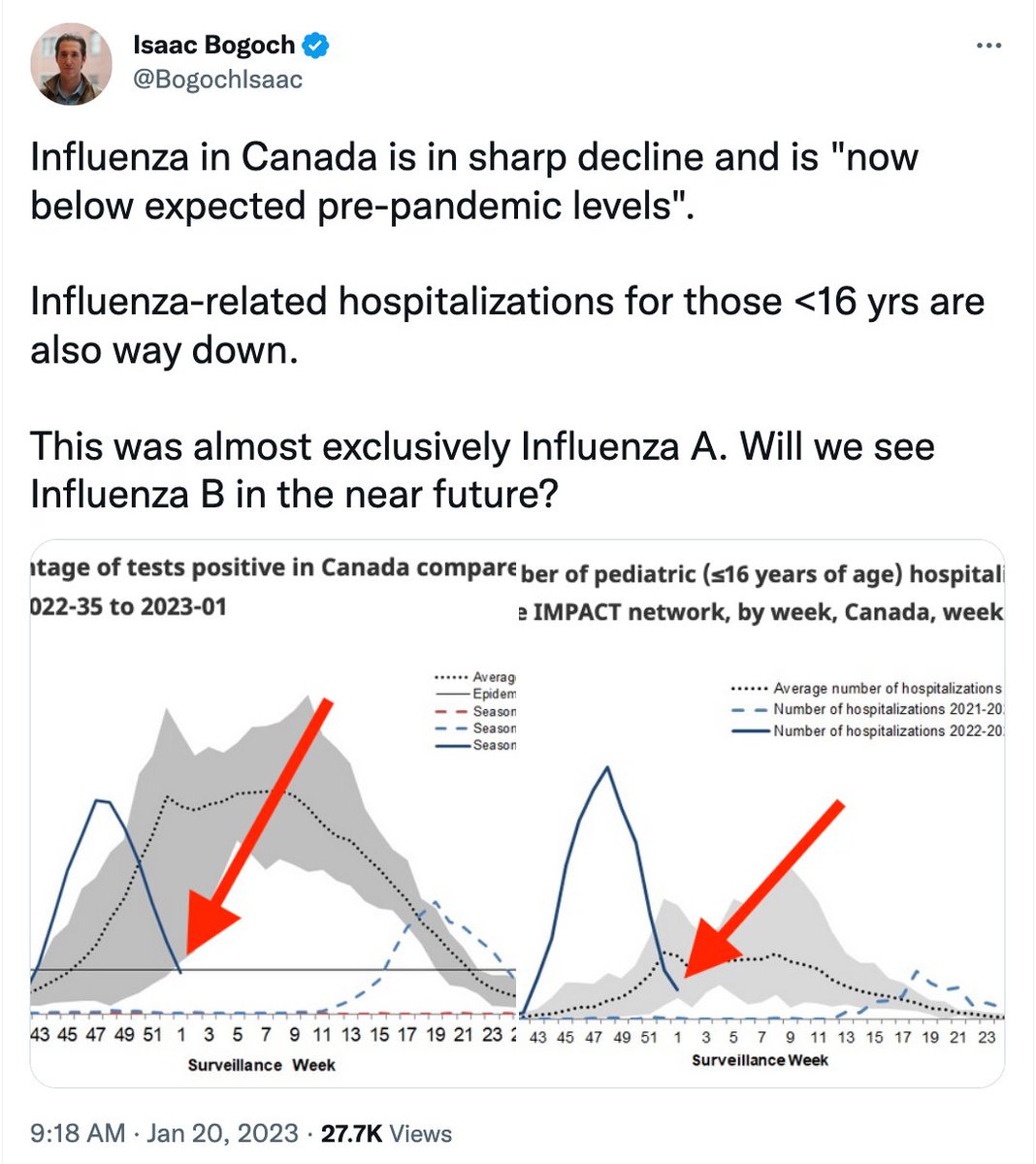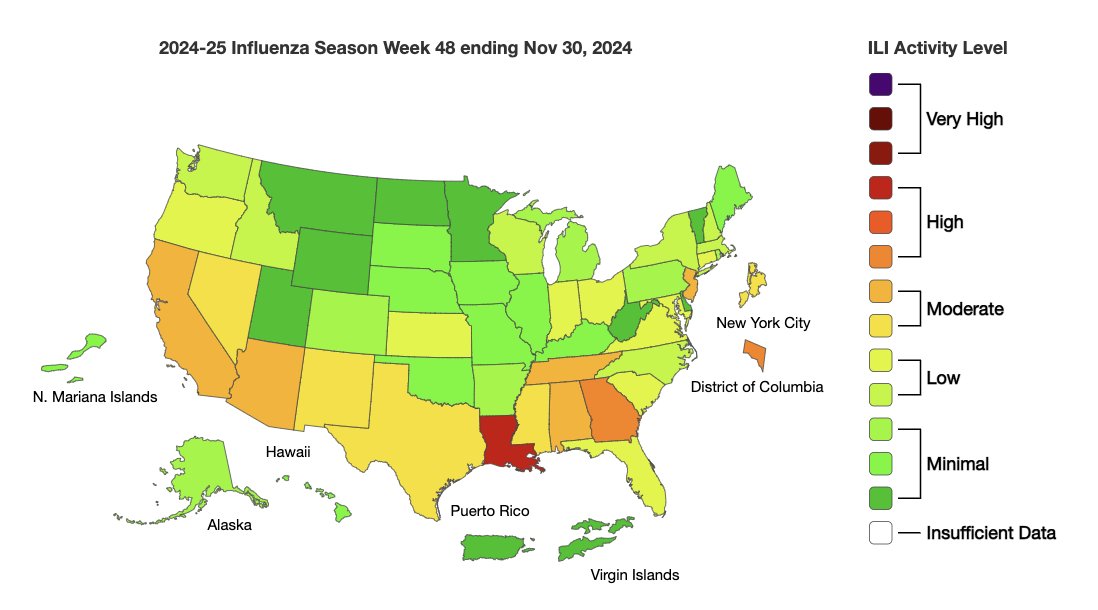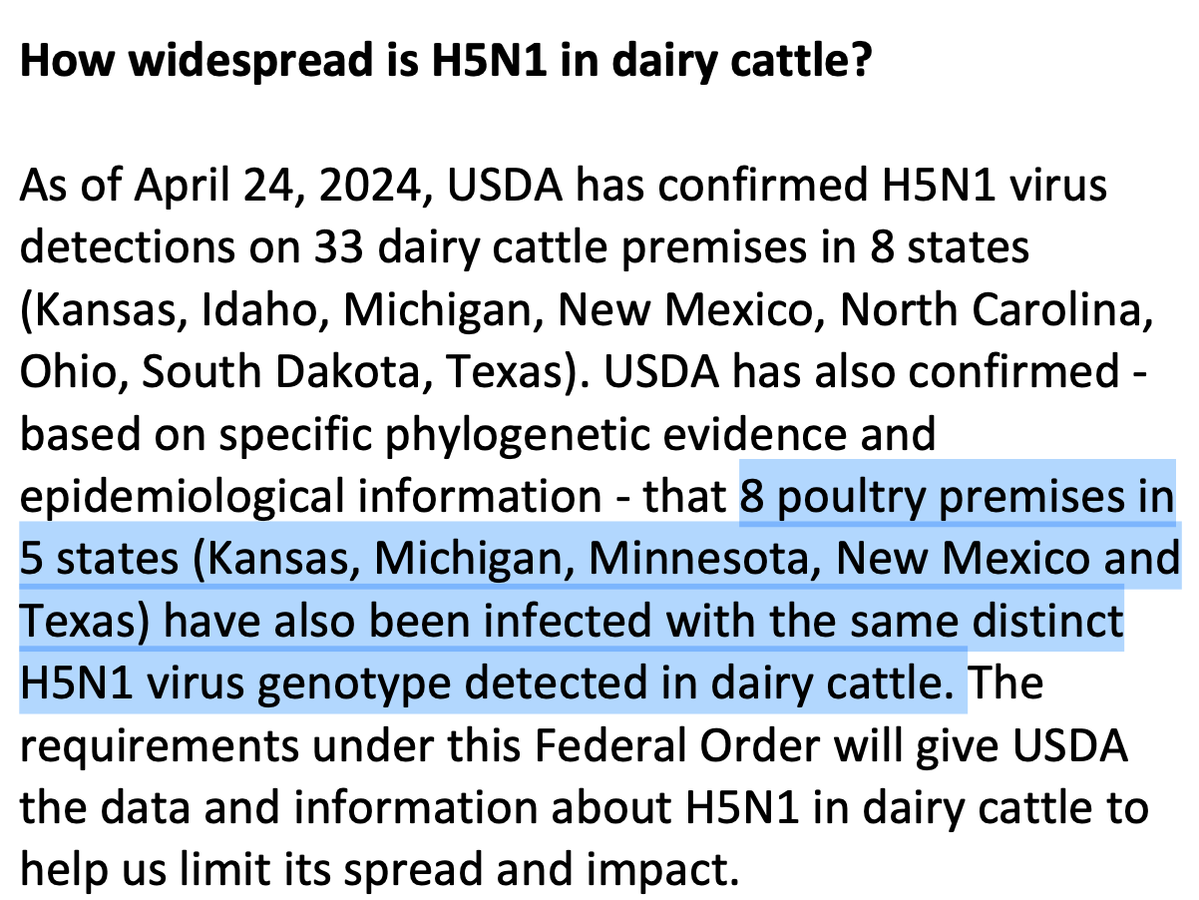1. Time for a #flu 🧵
#Influenza A, which started circulating at high levels earlier this season than in any season since the 2009 #H1N1 pandemic, is declining as quickly as it climbed. In several parts of the country, doctor visits for flu-like illness are below epidemic levels.
#Influenza A, which started circulating at high levels earlier this season than in any season since the 2009 #H1N1 pandemic, is declining as quickly as it climbed. In several parts of the country, doctor visits for flu-like illness are below epidemic levels.

2. It is truly remarkable to see the map of #flu-like activity show so little red in the 2nd week of Jan. It is like this year's flu season shifted forward 2 months or so.
Last week on the left. Same week in 2018, on the right, as the 2017-18 season started to take off.

Last week on the left. Same week in 2018, on the right, as the 2017-18 season started to take off.


3. Canada is seeing the same phenomenon, reports @BogochIsaac, who raises a key question: Virtually all the #flu activity so far has been #influenza A. Do we have a flu B wave in store? Pre-Covid, flu B often hit late in the season, after flu A had moved through. Will it this yr? 

4. @SCOTTeHENSLEY reported earlier this week that Philly is seeing a lot of #flu B recently. Is this the start?
Nationally there was a tiny uptick in the percentage of flu viruses that were flu B in the week ending Jan. 13, up to 2.4% from 0.4%. But that's based on 11 viruses.
Nationally there was a tiny uptick in the percentage of flu viruses that were flu B in the week ending Jan. 13, up to 2.4% from 0.4%. But that's based on 11 viruses.

5. So for the time being, probably too early to predict if there'll be a nationwide flu B surge.
What is being seen? A sharp decline in outpatient visits for respiratory viruses in all age groups, especially kids, teens and young adults.
What is being seen? A sharp decline in outpatient visits for respiratory viruses in all age groups, especially kids, teens and young adults.

6. Likewise there's been a decline in #flu activity in long term care facilities — a very good thing. 

7. Another 6 kids have died from #flu, bringing the season total to 85. While still lowish, that number will continue to climb. Sometimes there are long delays in reporting of pediatric deaths. Case in point: Last week @CDCgov was informed of a death from July - aka last season. 

• • •
Missing some Tweet in this thread? You can try to
force a refresh



















